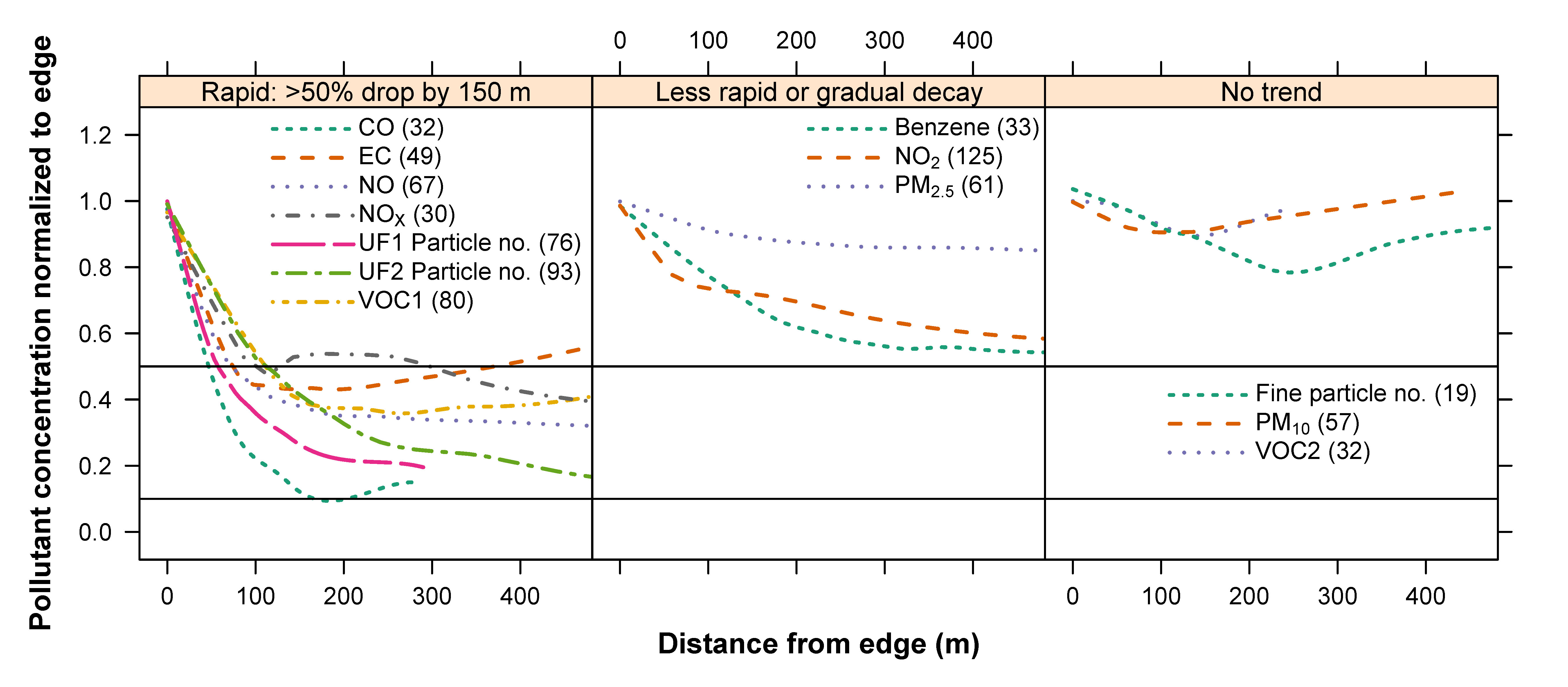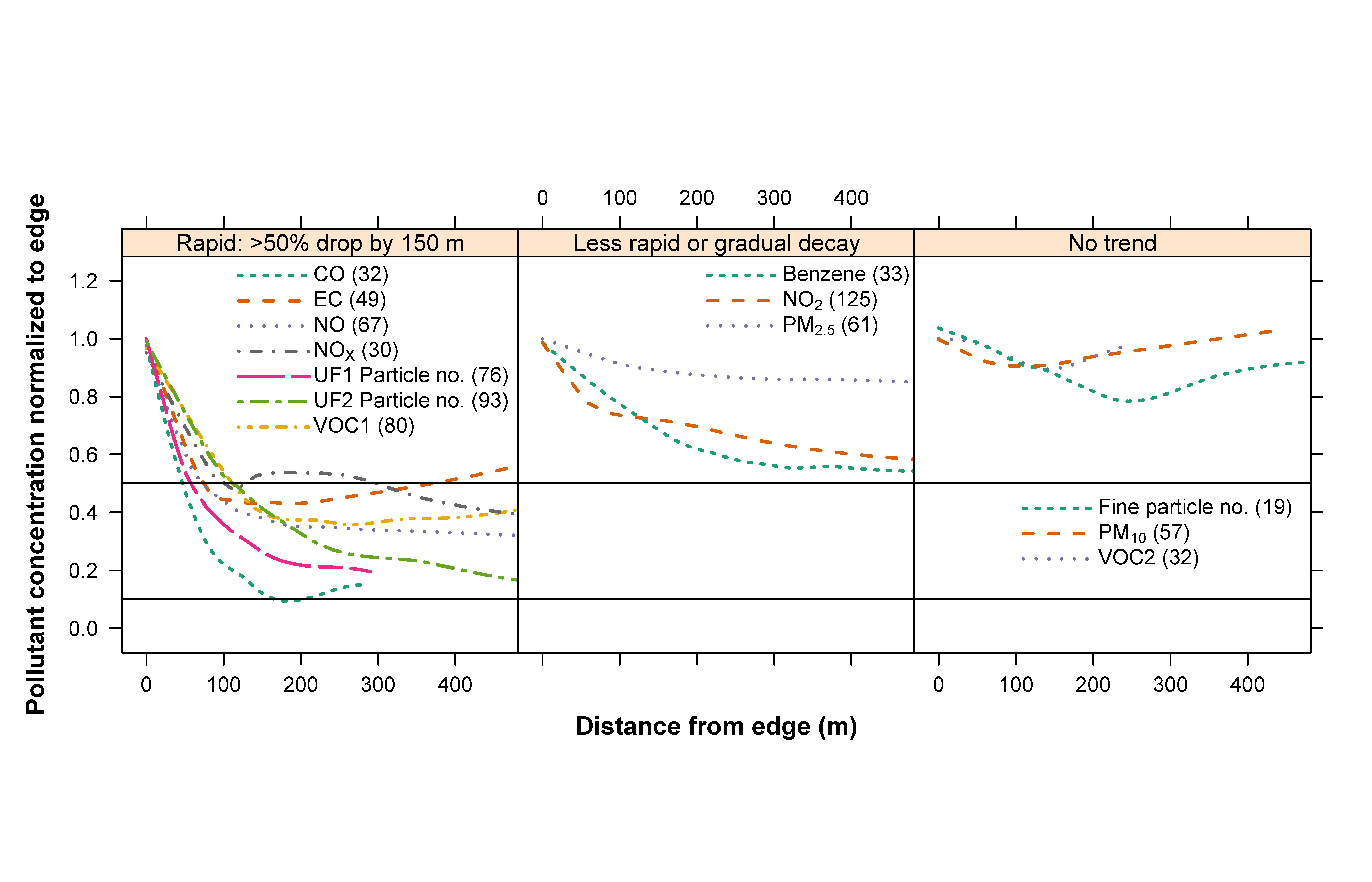Study Used Data From Around the World to Assess Near-Road Pollution Issues
Clients
California Department of Transportation (Caltrans)
At what point do pollutant concentrations return to background levels near a heavily traveled road? To answer this question, researchers from Sonoma Technology and UC Davis synthesized 30 years of published work on near-road pollution measurements. We evaluated data from over 40 studies and 13 countries; the analysis encompassed more than 700 air pollutant concentration measurements. Findings showed that most pollutants decay to background within 300-400 m from the edge of a major road, and virtually all pollutants decay to background by approximately 600 m. Changes in pollutant concentrations with increasing distance from the road fell into one of three groups: at least a 50% decrease in peak/edge-of-road concentration by 150 m, followed by consistent but gradual decay toward background; consistent decay or change over the entire distance range away from a road; or no trend with distance. Study findings will help agencies:
<ul>
<li>Plan land uses to minimize pollution exposure</li>
<li>Inform the public about near-road pollution problems</li>
<li>Guide smart growth planning</li>
<li>Identify higher-risk areas or building sites for potential mitigation efforts</li>
<ul>
<li>Plan land uses to minimize pollution exposure</li>
<li>Inform the public about near-road pollution problems</li>
<li>Guide smart growth planning</li>
<li>Identify higher-risk areas or building sites for potential mitigation efforts</li>
Air Quality
Emissions
Exposure
Policy and Planning
Transportation


Douglas S. Eisinger

Douglas
S.
Eisinger
Senior Vice President / Chief Scientist, Transportation Policy & Planning
Doug@sonomatech.com
/sites/default/files/2023-02/DSEres.pdf
